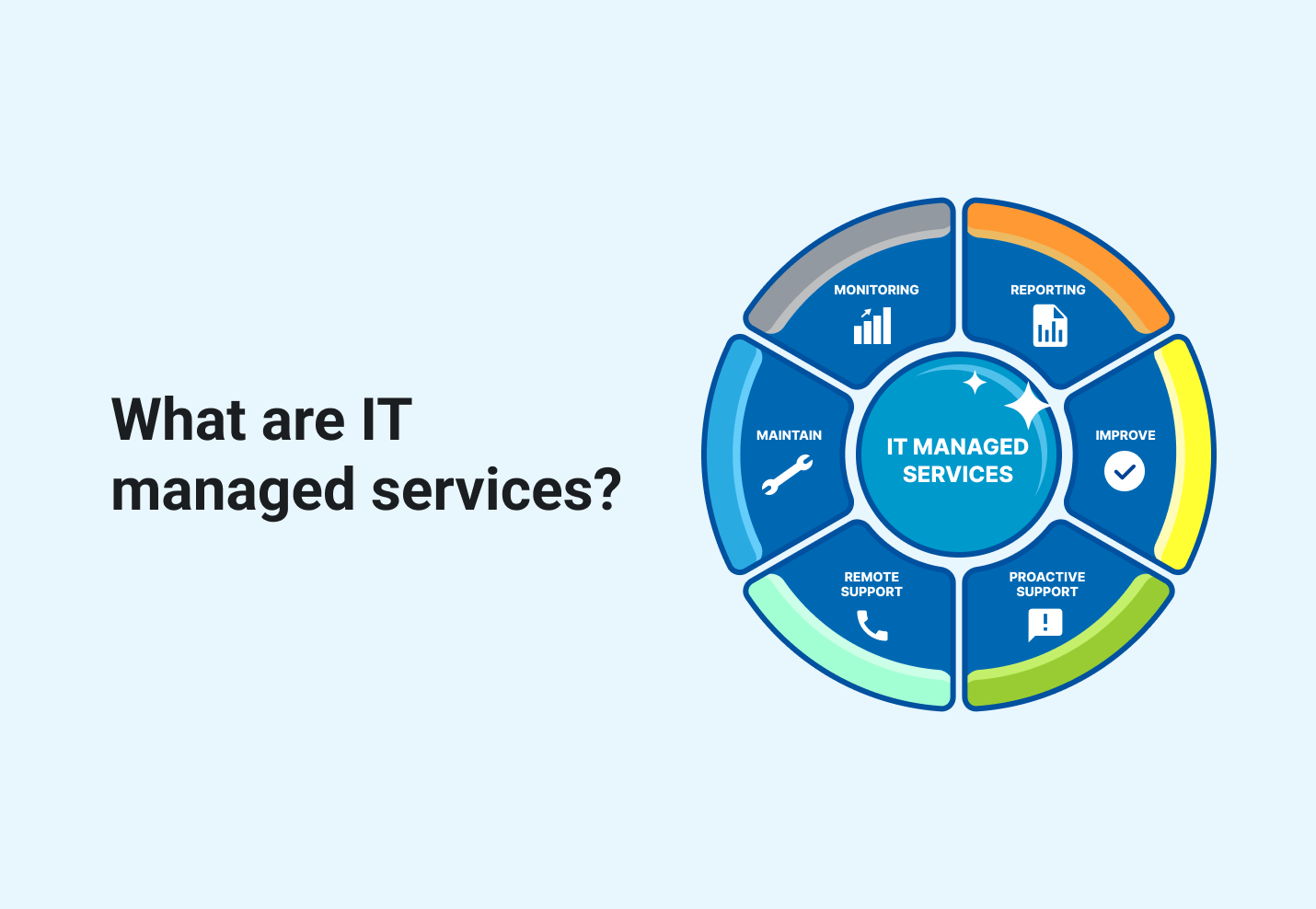Managed IT Solutions for Tiny and Big Companies
Why Every Company Ought To Take Into Consideration Managed IT Providers to Ensure Continuous System Monitoring and Maintenance
In today's swiftly progressing technical landscape, services face raising stress to preserve robust IT infrastructures - Managed IT. The choice to adopt managed IT services raises vital factors to consider relating to cost, scalability, and the option of an appropriate company that can line up with particular business demands.
Recognizing Managed IT Solutions
In today's technology-driven landscape, understanding handled IT services is essential for companies seeking to optimize their IT framework. Managed IT solutions refer to the practice of contracting out particular IT functions to a third-party company, called a Managed Provider (MSP) This model makes it possible for services to focus on their core competencies while making sure that their IT systems are preserved and checked properly.
Commonly, managed IT services encompass a variety of offerings, including network monitoring, information back-up and healing, cybersecurity, and aid workdesk support. By partnering with an MSP, organizations can take advantage of customized know-how and accessibility to innovative modern technologies without the expenses prices connected with preserving an in-house IT department.

Advantages of Continual Surveillance
Continual surveillance provides countless benefits for companies utilizing managed IT services, significantly improving their security stance and operational effectiveness. By keeping real-time oversight of IT systems, businesses can swiftly detect and reply to prospective dangers, decreasing the threat of information violations and cyberattacks. This positive technique to safety not just safeguards sensitive info but likewise assists to maintain conformity with sector guidelines.
Moreover, continual surveillance aids in recognizing performance traffic jams and system vulnerabilities, allowing for prompt interventions that stop downtime and solution interruptions. This ensures that IT framework remains trusted and with the ability of sustaining company procedures perfectly. MSP Near me. As companies significantly rely upon innovation, the ability to monitor system efficiency in real-time ends up being crucial for sustaining productivity
Additionally, continual tracking enables businesses to maximize resource allocation by giving understandings into usage patterns and system wellness. This data-driven technique enables informed decision-making pertaining to upgrades and financial investments in IT infrastructure. Inevitably, the benefits of constant monitoring expand beyond prompt safety enhancements, placing organizations for lasting success by promoting a resilient and effective operational setting.
Proactive Maintenance Methods
Regularly applying proactive upkeep strategies is necessary for organizations using handled IT services to make sure optimal performance and decrease the risk of unforeseen failings. These techniques entail systematic techniques that focus on determining and resolving prospective concerns before they rise into substantial problems.
One trick method is regular system updates and spot management, which help protect versus vulnerabilities that could be exploited by cyber risks (Managed IT services). Ensuring that software and equipment parts are updated not only improves safety and security however likewise enhances general system performance
Additionally, routine performance evaluations can determine bottlenecks and inadequacies. By analyzing system efficiency metrics, IT groups can make informed decisions around necessary upgrades or resource reallocations. Developing a routine timetable for information backups is vital to protecting crucial information and guaranteeing business connection.
Training staff in finest techniques for modern technology use is another aggressive step that decreases human mistake, which is often a considerable consider system downtime. Ultimately, adopting an aggressive upkeep society cultivates a resilient IT environment that sustains service purposes and enhances total performance. With these techniques, companies can effectively alleviate dangers and make certain a durable IT framework.
Cost-Effectiveness of Managed Solutions
Aggressive upkeep approaches not just boost system integrity however additionally add to the overall cost-effectiveness of managed IT remedies. By implementing routine monitoring and upkeep, services can recognize prospective concerns prior to they intensify, hence minimizing the possibility of costly downtime and emergency situation repair services. This preventative strategy enables companies to assign their economic resources extra successfully, as they can avoid unanticipated costs connected with system failings.
Moreover, managed IT services usually provide foreseeable rates versions, allowing businesses to budget effectively. MSP. Unlike standard IT setups, where expenses can rise and fall substantially due to unanticipated issues, handled services provide a clear understanding of recurring expenses. This transparency help in monetary planning, guaranteeing that business can spend in various other critical locations of their operations
Furthermore, outsourcing IT management to a specialized company can lead to significant financial savings in labor costs and training expenditures. Firms no more need to hire and keep a full in-house IT team, which lowers expenses. Eventually, the assimilation of managed IT services cultivates a much more lasting economic version for companies, allowing useful content them to focus on growth while guaranteeing their innovation facilities stays durable and effective.

Selecting the Right Service Provider
When analyzing managed IT services, picking the best supplier is essential for making the most of the advantages of your investment. A well-chosen supplier not only improves your functional efficiency yet additionally straightens with your business goals and demands. Begin by assessing their experience and experience in your particular sector; providers with a deep understanding of your industry will be better geared up to resolve unique challenges.
Following, consider their variety of services. An extensive provider ought to supply positive monitoring, upkeep, and assistance, making certain holistic insurance coverage of your IT framework. Additionally, scalability is crucial; as your service grows, your IT needs will evolve, and your company should have the ability to adapt as necessary.

Finally, transparency in prices and services is vital. A credible service provider will clearly detail their offerings and costs, enabling you to make informed decisions without concealed fees. By meticulously thinking about these elements, your company can safeguard a managed IT provider that promotes growth and development.
Conclusion
To conclude, the application of handled IT services becomes a critical necessity for services intending to improve operational effectiveness. Continuous system monitoring and aggressive maintenance not just strengthen safety however likewise minimize downtime, allowing companies to focus on their core tasks. The cost-effectiveness and scalability of taken care of remedies present considerable benefits in today's dynamic technological landscape. Ultimately, choosing the appropriate managed IT carrier is vital for promoting a resilient IT infrastructure efficient in sustaining continual development.